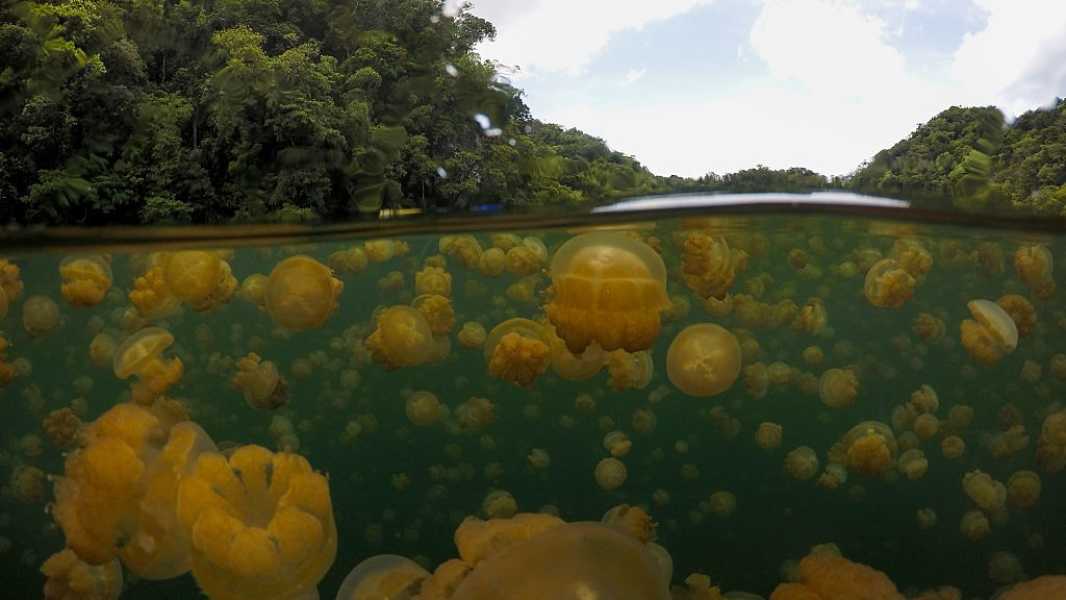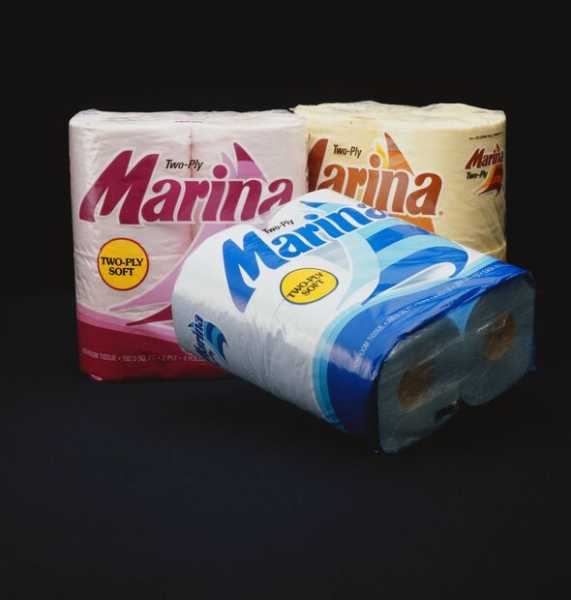
Jellyfish Lake is a salt lake in Palau that gets its name from the millions of translucent creatures that live there. (Photo by Benjamin Lowy/Getty Images)
Jellyfish Lake is a saltwater body of water on Eil Malk Island in Palau that is teeming with golden jellyfish, a unique subspecies found nowhere else on the planet. According to the Coral Reef Research Foundation (CRRF), the lake is typically home to about 5 million jellyfish, although in some years, such as 2005, the number has exceeded 30 million.
Jellyfish Lake exhibits strong stratification, meaning it is divided into distinct layers. The golden jellyfish live in the upper layer, which extends from the surface to a depth of about 43 feet (13 meters). At a depth of 43 to 50 feet (13 to 15 meters), there are pink bacteria that prevent light and oxygen from reaching the lower layer, which is located at a depth of 50 to 100 feet (15 to 30 meters).
The lake is connected to the ocean through small cracks in the Eil Malk limestone bedrock, but is considered an isolated ecosystem, according to CRRF educational materials. Jellyfish Lake was formed at the end of the last ice age, about 12,000 years ago, by melting ice and rising sea levels. Seawater filled lowlands in Palau and elsewhere, forming three types of lakes: stratified lakes, like Jellyfish Lake; mixed lakes, connected to the ocean through large tunnels; and transitional lakes, also connected to the ocean but through smaller tunnels.
The pink layer of Jellyfish Lake exists because conditions are right for a specific type of pink bacteria. These microorganisms form a barrier between the oxygenated upper layer and the anoxic lower layer. This barrier rises and falls depending on changes in water density.
The lack of oxygen below the pink layer is lethal to most life forms. What's more, decomposing vegetation and animals at the bottom of Jellyfish Lake release toxic hydrogen sulfide, allowing only certain microbes to survive, according to the CRRF.
The endemic population of golden jellyfish (Mastigias papua etpisoni) in Jellyfish Lake likely evolved from a small group of spotted jellyfish (Mastigias papua) that became isolated when sea levels dropped after the lake was formed. The unique conditions within the lake forced the jellyfish to adapt, resulting in a new subspecies named after former Palauan President Ngiratkel Etpison.
Sourse: www.livescience.com





